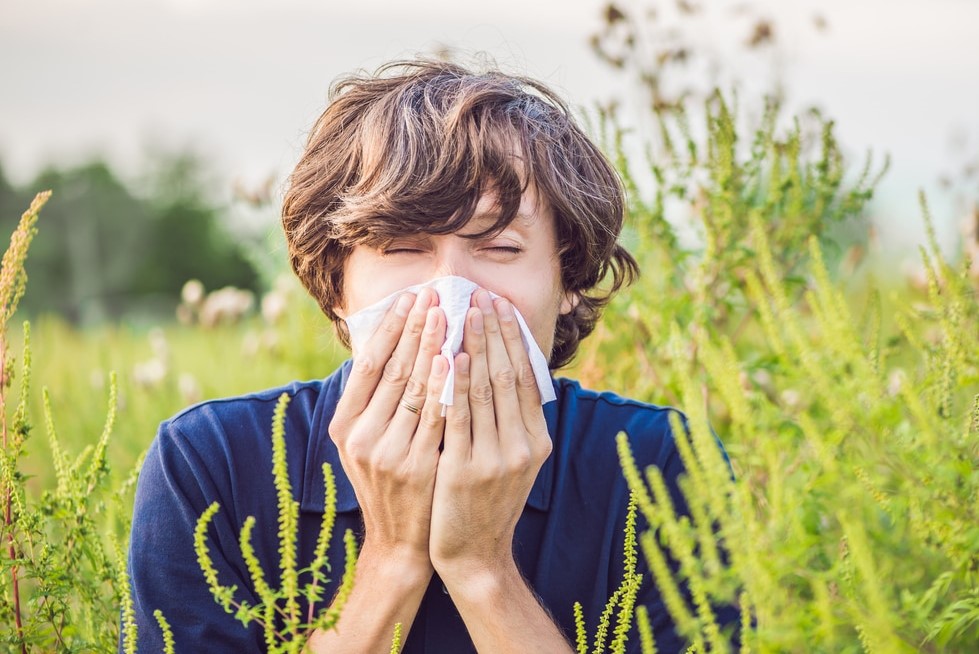
Allergies and Drugs: What's the Difference Between First-Generation and Second-Generation Antihistamines?
Antihistamines are a class of drugs that help to treat the symptoms of various allergies. The main difference between first-generation and second-generation antihistamines is that the latter do not cause sleepiness and are considered safer because they interact better with other medications
What Are Antihistamines Used For?
Antihistamines are medications that block chemicals in the body called histamines.
Histamines are the chemical that gets released after you are exposed to something you are allergic to.
They cause the symptoms of an allergic reaction, like:
- Itchiness
- Hives
- Runny nose
- Itchy eyes
- Sneezing
- Insomnia
- Nausea
- Vomiting
- Fatigue
There are two different types of histamines: H-1 receptor antagonists and H-2 receptor antagonists
Typically, antihistamines that treat H-2 receptor antagonists treat gastrointestinal symptoms.
Both first-generation and second-generation antihistamines treat H-1 receptor antagonists.
H-1 receptor antagonists treat:
- Colds
- Food allergies
- Hives
- Hay fever
- Insect bites
- Reactions to medications
What Are First-Generation Antihistamines?
First-generation antihistamines became available for general use in 1942 and are still used today.
These antihistamines work by affecting the histamine receptors in the brain and spinal cord.
One of their defining characteristics, though, is that they go through the blood-brain barrier and can cause sleepiness.
![]() Some examples of first-generation antihistamines include:
Some examples of first-generation antihistamines include:
- NyQuil
- Tylenol Cold and Cough Nighttime
- Periactin
- Dayhist
- Chlor-Trimeton
These antihistamines start to take effect in about 30 to 60 minutes and last for four to six hours.
The most popular first-generation antihistamine is chlorpheniramine, especially for emergency use.
Chlorpheniramine can be found in the following over-the-counter antihistamines:
- Advil
- Tylenol
- Chor-Trimeton
- Dimetapp
Some of the side effects of first-generation antihistamines, besides drowsiness, are:
- Dry mouth and eyes
- Blurry vision
- Headaches
- Dizziness
- Lowered blood pressure
- Mucous thickening
- Increased heart rate
- Constipation
- Trouble urinating
What Are Second-Generation Antihistamines?
Second-generation antihistamines were first developed in the 1980s.
They cause less sleepiness than first-generation antihistamines and also interact with fewer medications.
Some examples of second-generation antihistamines include:
- Claritin
- Zyrtec
- Allegra
- Clarinex
You can take second-generation antihistamines orally, nasally, or via eye dropper.
They typically last for up to 24 hours.
They are able to reduce the inflammation caused by allergies and are favored both because they have fewer side effects and can be more effective in treating allergy symptoms.
Some side effects of second-generation antihistamines are:
- Headache
- Cough
- Fatigue
- Sore throat
- Stomach pain
- Nausea
- Vomiting
Which Type of Antihistamine Should I Take?
There are many different types of antihistamines to take, most of which can be prescribed or bought over-the-counter.
Due to the sheer volume and the various ways that these medications treat different symptoms, you may need the guidance of a doctor or pharmacist.
However, for less severe allergies, you can probably take over-the-counter antihistamines.
If you have more severe symptoms, you may need to be prescribed antihistamines by your doctor.
If this happens, you and your doctor will need to work closely together.
Children, pregnant women, and older people are more sensitive to antihistamines.
Follow the dosage instructions on the medicine package.
It is important that you do not take more than one antihistamine at a time unless otherwise instructed by your doctor.
You may need to take more than one antihistamine in order to figure out which ones work for you, but you should always try new medications at different times.
You should also pay special attention to medications that the antihistamines may interact with.
If you are taking quite a few medicines, chances are that you should probably take second-generation antihistamines.
If antihistamines do not work for you, you should speak to your doctor about an alternative, such as a decongestant.
You should not take any sort of first-generation antihistamine if you have any of the following conditions:
- Glaucoma
- Difficulty with urination
- Asthma
- Emphysema
- Chronic bronchitis
- Thyroid disease
- Heart disease
- High blood pressure
You should keep your antihistamines in a cold, dry place out of reach from children.
It is not recommended that you store antihistamines in bathrooms, as bathrooms can get hot and humid. In these environments, antihistamines can lose their effectiveness.
References:
American Osteopathic College of Dermatology: “Antihistamines.”
Cleveland Clinic: “Antihistamines.”
familydoctor.org: “Antihistamines: Understanding Your OTC Options.”
International Journal of Allergy Medications: “H1-Antihistamines for Allergic Diseases: Old Aged but Not Old-Fashioned Drugs.
Read Also:
Emergency Live Even More…Live: Download The New Free App Of Your Newspaper For IOS And Android
Adverse Drug Reactions: What They Are And How To Manage Adverse Effects
Symptoms And Remedies Of Allergic Rhinitis
Allergic Conjunctivitis: Causes, Symptoms And Prevention
What Is And How To Read The Allergy Patch Test
Allergies: New Drugs And Personalised Treatment
Allergic Contact Dermatitis And Atopic Dermatitis: The Differences
Spring Arrives, Allergies Return: Tests For Diagnosis And Treatment



